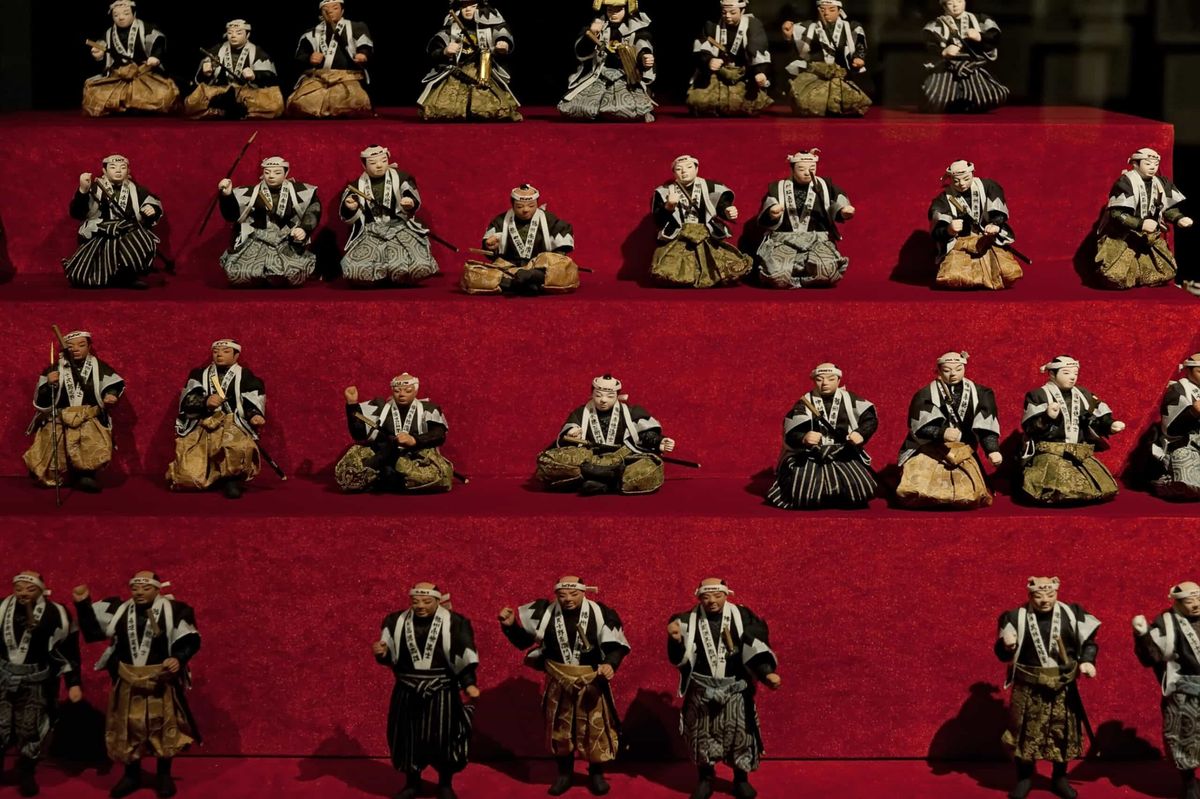The Differences Between Feudalism In Japan And Europe

This article will explore some of the advantages and disadvantages of feudalism in Japan, how Japanese feudalism differed from European feudalism, and how the effects of feudalism are still seen in Japanese society.
Most Westerners think of medieval Europe when the subject of feudalism is raised, but Japan and China also had highly established feudal societies that lasted for centuries.
We could spend a whole article discussing exactly what feudalism is. For those of us who aren’t history buffs, a very oversimplified way of explaining a feudal system is this. Nobility rules the society, and ordinary people work and fight on behalf of the nobility in exchange for protection and a place to live. This system is commonly associated with medieval Europe, but Japan was also a feudal society between 1192 and 1868.
3 Similarities Between The Japanese Shogunate And Feudal Europe
Despite being thousands of miles away from each other, both Japan and Europe had some major resemblances. From marrying off the lord's daughter to retain ties among kingdoms or clans, to raising massive armies made up of vassals to crush and conquer enemies all had a place among these two regions.


1. Similar Ruling Structure
The European feudal system had a king in place at the top of the ruling structure, similar to Japan’s emperor. The next level of power in the European feudal system was the lords, whereas in the Japanese system it was the shogun (the leader of the military).
The third layer of power in the European feudal system fell to lesser lords, whereas in feudal Japan it fell to the daimyo (loyal vassals of the shogun). Both lords and daimyos were landowners. The next layer of the European feudal system was the knights, the military warriors. Similarly, Japan had the samurai class. Below the military, both societies had average townspeople. The role of the townspeople in both societies was to serve the nobility in exchange for protection from the military and land from the lords.


2. Similar Emphasis on Military
Europe had knights, Japan had the samurai, but both valued military highly during their respective feudal periods.
Knights and samurai were both considered their own separate class – above-average citizens, but below the nobility. In both systems, warriors began their training at a young age. The training was far more holistic than just learning to fight in both Europe and Japan – warriors were expected to adhere to a code of honor at all times, and to act as aspirational role models to citizens.
There were even pronounced physical similarities between the samurai and the knight class – both wore a suit of armor, and both rode horses.
5 Differences Between The Japanese Shogunate And Feudal Europe
Naturally, Japan and Europe would have more differences than similarities. Actually, if you take a look at modern Japan and Europe, you could easily pick out differences that directly correlate with how things were hundreds of years ago!
1. Legalistic vs Unconditional Loyalty
Europe’s feudal system encouraged a legalistic style relationship between nobility and citizens, based on Roman law. Under this ethos, loyalty to the nobility was conditional on the nobility fulfilling their side of the bargain – in other words, keeping citizens protected and providing reasonable living conditions. Should the nobility let down the citizens in feudal Europe, a revolution was a possibility.
In Japan’s feudal system, the relationship between nobility and citizens was modeled on the Chinese system. The ethos of the Chinese system placed an emphasis on the unconditional loyalty of citizens to the nobility, regardless of their actions. This left very little room for revolt if the nobility were not serving their people well.
Interestingly, you can see the after-effects of these two separate ethos in Europe and Japan today. In Europe, we tend to see individualistic societies – where each person strives towards their own personal goals. In Japan, we tend to see a collectivist attitude – where citizens work as a community for the good of the country as a whole.
2. Different Inheritance Systems
In European feudal systems, the firstborn son usually inherited the family land. This is often still the case in modern times. In some families, this worked out well – but in others, it posed major issues. For example, some families had only daughters, and others had firstborn sons who were unsuitable for the duties of the heir. Others had no descendants at all.
Japan’s system avoided these issues by adding an element of flexibility to the inheritance system. Japanese people could select the most suitable son from the family to be their sole heir. If the family did not have a suitable son, it was acceptable to adopt an adult man as a son in order to pass down the inheritance. Common adoptees included sons-in-law, nephews, or even completed unrelated people.
Hojo Masako, the wife of the first shogun of the Kamakura period, was vocal in her wishes for inheritance law to be inclusive of women in Japan. She was instrumental in the creation of the ama-shogun, a charter which laid out the legal rights of women to inherit equal amounts to their fraternal kin. Because of this, families could pass on their riches to their daughters if they saw fit.

3. Different Views on the Role of Women
You only have to think of any fairy tale set in medieval times to gain insight into how women were viewed during the European feudal period. Many sociologists would argue that the images of delicate damsels in distress in need of rescuers haunt women in Western society up until this very day.
Interestingly, Japan never took this view on women. The samurai had a female branch, the onna-bugeisha, who fought alongside the male warriors when needed. Japanese women were expected to be just as tough as men during feudal times, willing to sacrifice and face destruction for the greater good of their community.

4. Different Time Periods
Feudalism in Europe took place earlier than feudalism in Japan. The European feudal period lasted from approximately 800 – 1400, while the Japanese feudal period lasted from approximately 1192 – 1868.
Japan’s borders were closed for much of this time – this allowed for the feudal system to be preserved without outside influence. When American Matthew C. Perry and his crew arrived at a Japanese port and demanded entry, Japan had no choice but to move with the times to keep up with potential foreign invaders. This prompted Japan to move away from the feudal system and towards the society that we see today.


5. Different Attitudes Toward Capturing
It wasn’t unusual for warriors to be captured or defeated in either feudal system. However, both dealt with this situation extremely differently.
It was socially acceptable for knights in the European feudal system to await release by ransom, usually paid by the nobility. However, in Japan, it was expected that a samurai warrior would commit an honorable suicide (seppuku) following any form of enemy victory. The samurai warrior would disembowel himself with his own knife upon capture to demonstrate his will power and commitment to the nobility.
What Were The Advantages Of Japanese Feudalism?

1. Organization
Say what you want about feudal systems, but you can’t deny that they’re highly organized. Japan’s feudal system saw the country being divided into clear sectors, with each class of citizens being clear on what their role in society was.
The emperor ruled ceremonially, the shogun dictated policy, the samurai protected the townspeople, the townspeople worked on the land. It is true that people did not have a choice about what sector of society they belonged to – but within their sector, their job was clearly defined and the country ran efficiently.
2. Transactional Relationship
Feudal societies are based on transactional relationships between the different classes of society, which means everybody gets something from the arrangement.
The townspeople work hard to supply materials for the nobility. The samurai work hard to protect every class of society against violent attacks. The nobility works hard to represent the society on an international scale and draw up public policy while providing basic living conditions to the lower classes.
One could certainly argue that the upper classes benefited more than the lower classes from the feudal system in Japan, but by its nature the relationship between classes is transactional.
What Were The Disadvantages Of Japanese Feudalism?
1. Class Divide
Feudal societies are hierarchical by nature. There is no such thing as “equal rights” in feudalism – the freedoms that you are entitled to are dictated by what level of society you are a part of. This certainly jars with our current worldview -- human rights activists could never get behind a feudal system, and indeed rightly so.
The upper classes benefitted richly from the work of the lower classes – they provided the materials and infrastructure needed for nobility to live a glamorous lifestyle. The lower classes put in a lot of heavy labor for mere protection and permission to live on borrowed land, with no opportunity to rise any higher. While unconditional loyalty to the nobility was a value that Japan’s feudal system was firmly built on, an outsider would have to question the fairness of this system.
2. No Say in Society
The all-powerful nature of the emperor and shogun meant that the lower classes had no input into how society was run. In other feudal societies, townspeople regularly revolted against the upper classes for this very reason. In Japan, the collectivist ethos of feudalism meant that revolts were few and far between – when they did occur they tended to be on a very local level.
3. Inherited Positions Rather Than Qualified
How did you become a shogun or samurai in feudal Japan? Quite simply, you were born into it. These honors were hereditary in nature – and this left little room for the most qualified and passionate people for the job.
While the hereditary system ensured consistency of numbers to an extent (meaning there were always enough people in each class), it did not allow for hard work and natural aptitude. Strong fighters were presumably left in the townspeople class, those with no desire to fight were presumably left in the samurai class by mere merit of birth.
Does Feudalism Still Exist In Japan?
Although feudalism is long finished in Japan, the old regime has impacted modern-day Japan in ways that can still be seen today. The feudalistic culture, ceremonies, and culture can still surprisingly be seen in modern places such as the work office. Let's take a look at where these influences have found themselves today.

Culture and Arts
The Japanese feudal system emphasized the importance of Japanese arts. When you look at the Samurai class in particular, these warriors were not only highly trained in martial arts, but also arts such as calligraphy. These are still considered revered crafts in Japanese culture and practiced meticulously to this day.
Religious Undertones
While European feudal systems had Christian influences, Shintoism was what underpinned feudal Japan. The practice of Shintoism on a societal level in the feudal system left behind principles that underpin Japanese attitudes and behaviors to this day. Shintoism purports the importance of inner peace and honoring nature, among other points.
Honor Code
The Japanese Samurai class operated under a strict code of personal conduct which was designed to be aspirational for lower classes of citizens. In modern Japanese societies, we still see codes of honor. In many cases, these are unwritten social rules and manners in which all Japanese people are expected to conduct themselves when in public. In other cases, such as that of sumo wrestlers, they are written codes of honor.
Confucian Influences
The Confucian influences that underpin the collectivist societal attitude widely seen in modern-day Japan were introduced to society as a whole during the feudal system. Of course, a cynic might say that the Confucian belief system directly benefitted nobility at this time – promoting an attitude of the whole community working together for collective gain, rather than individual success, discourages revolt from peasant classes.
Regardless of the motivation for implementing Confucianism, it is still widely considered a primary influence on the Japan of today.





